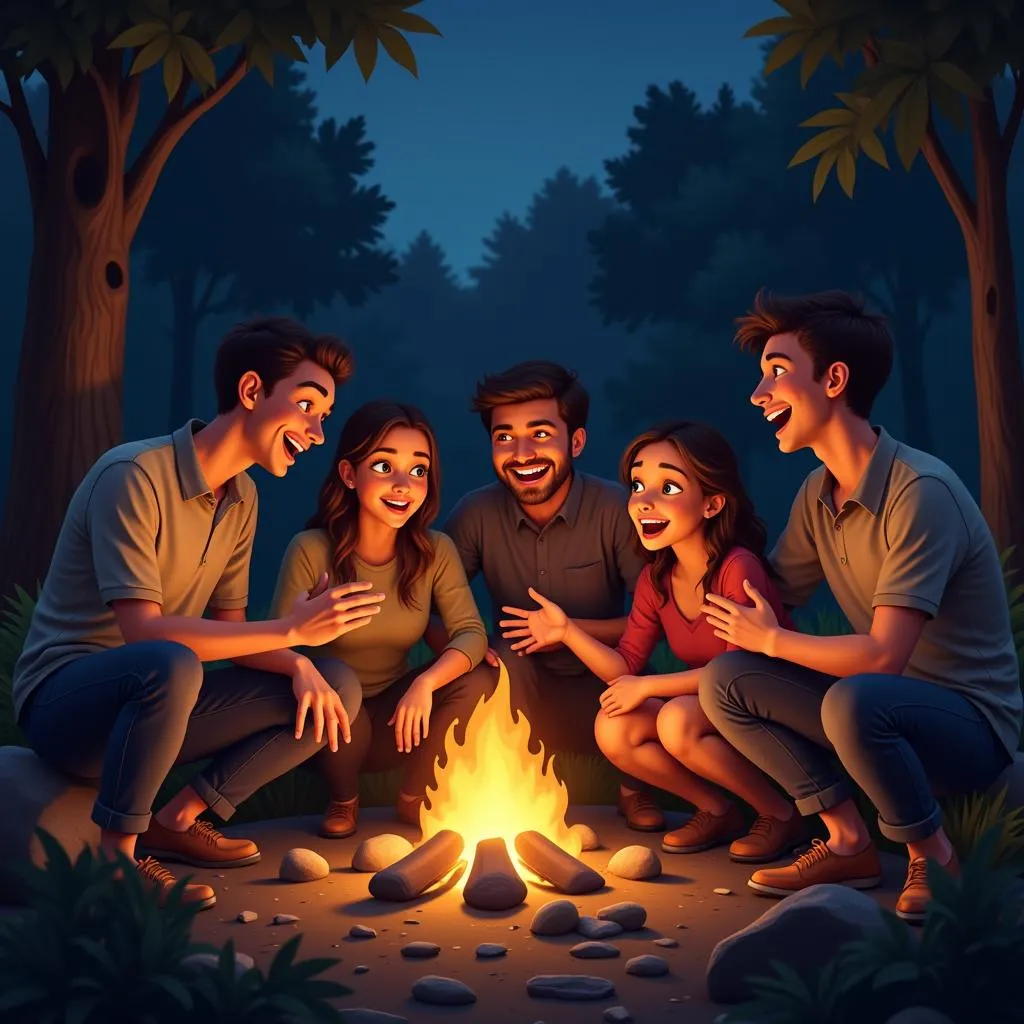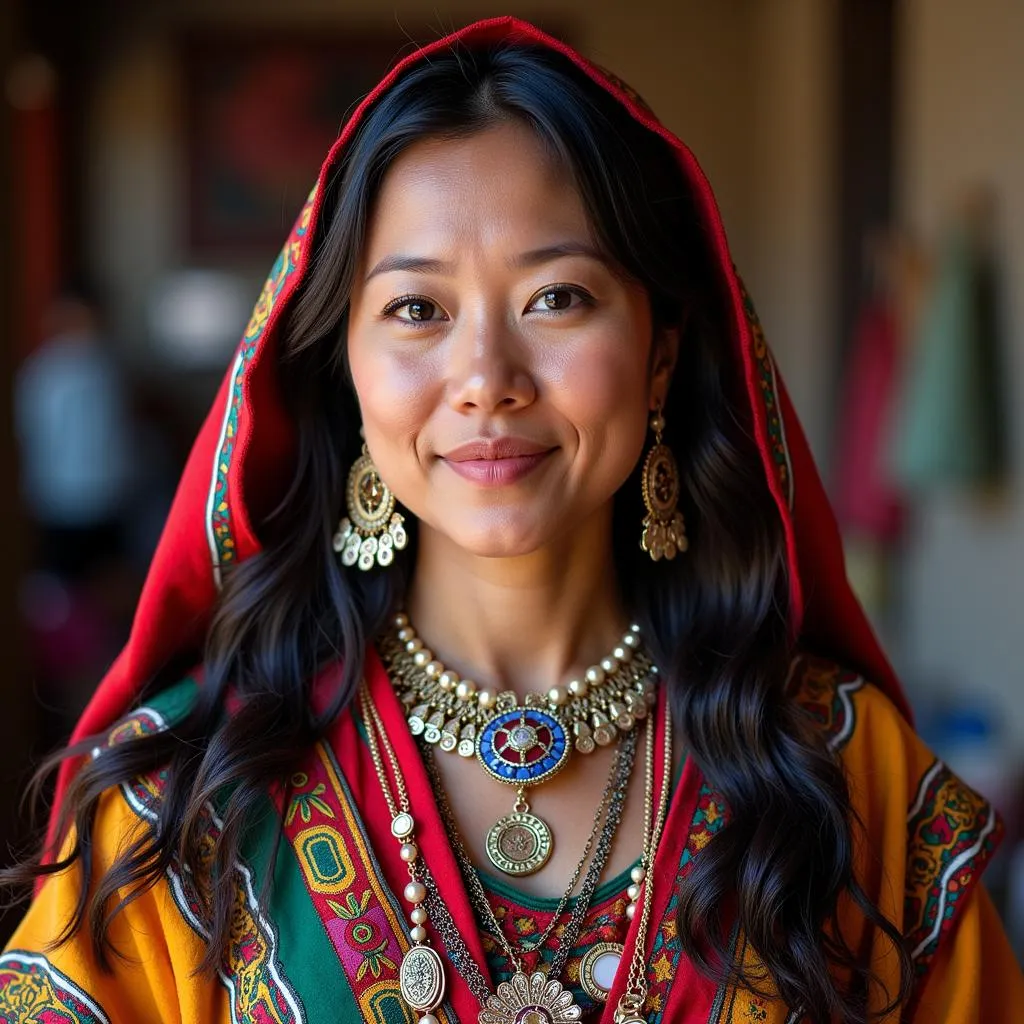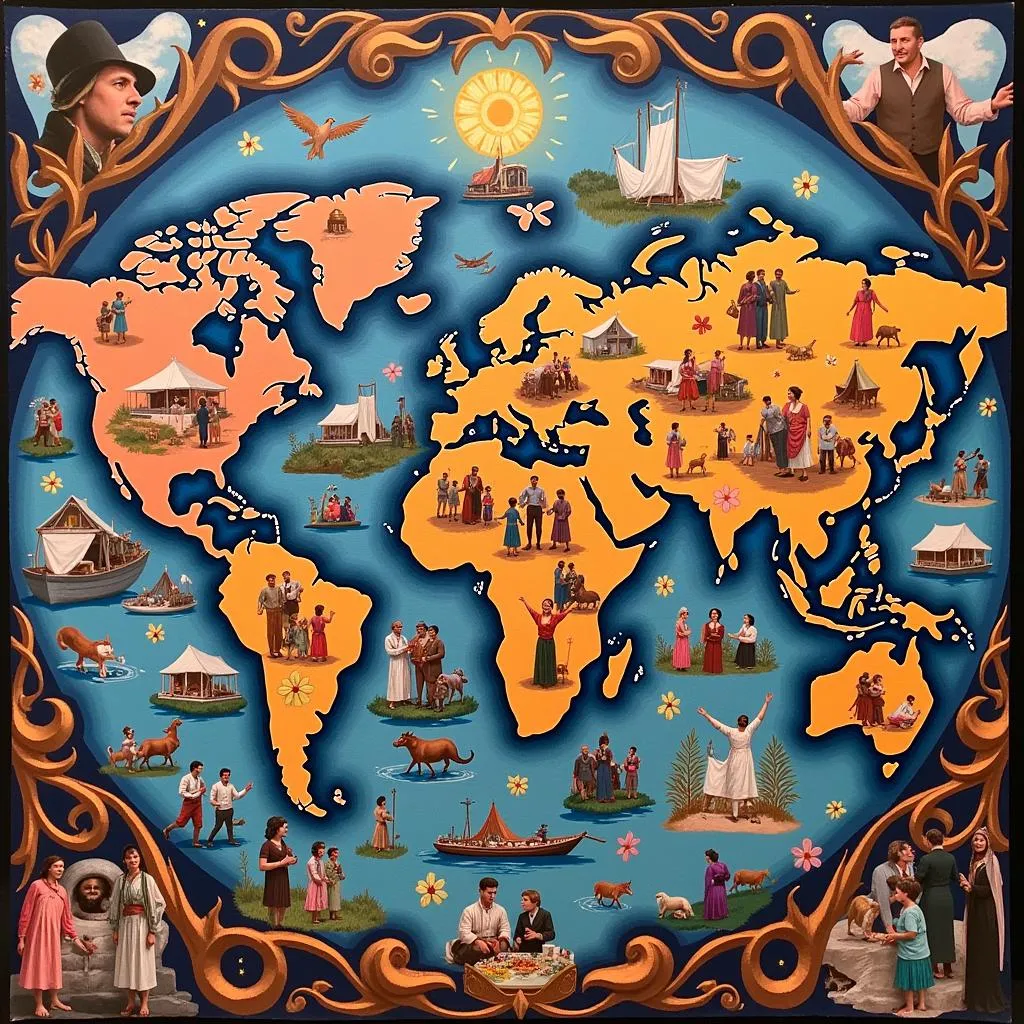Imagine a world without pictures. No photographs to capture precious moments, no paintings to inspire awe, no symbols to unite communities. Pictures, in all their forms, are powerful tools that shape our understanding of culture and society, acting as bridges that connect us across time, space, and cultural differences.
This article delves into the fascinating relationship between Culture And Society Pictures, exploring how visual representations influence our perceptions, shape narratives, and contribute to the tapestry of human experience. We’ll examine the different ways images impact our lives, from capturing moments of joy and sorrow to expressing identity and fueling social change.
Visual Storytelling: Beyond Words
 A group of people gathered around a campfire, sharing stories and laughter
A group of people gathered around a campfire, sharing stories and laughter
Since the dawn of humanity, humans have used visual art to communicate and connect. Cave paintings, ancient sculptures, and intricate hieroglyphics all serve as testament to the power of pictures to transcend language barriers and convey complex ideas. In modern times, the rise of photography and digital media has further accelerated the power of images, making them ubiquitous and accessible.
Dr. Emily Carter, an anthropologist specializing in visual culture, explains: “Pictures are not just passive reflections of reality; they are active agents that shape our perception of the world. They offer us a window into different cultures, societies, and historical periods, but they also frame our understanding of those experiences.”
Culture and Society Pictures: A Reflection of Our Values
 A woman wearing traditional clothing and jewelry
A woman wearing traditional clothing and jewelry
The way a society chooses to represent itself through pictures reveals a great deal about its values, beliefs, and priorities. For instance, a society that prioritizes wealth and status may be more likely to showcase pictures of luxury goods and extravagant lifestyles. In contrast, a society that values communal living and environmental sustainability may feature images of nature, sustainable practices, and communal gatherings.
The pictures we create, share, and consume are a reflection of our collective values. They tell stories about who we are, what we believe in, and how we envision our future. By analyzing the visual narratives present in a society, we can gain valuable insights into its cultural identity and its aspirations for the future.
The Power of Images: Fueling Social Change
 A group of people protesting for equality
A group of people protesting for equality
Throughout history, pictures have played a critical role in sparking social movements and igniting change. Iconic photographs of civil rights protests, anti-war demonstrations, and environmental campaigns have captured the spirit of these movements, galvanizing public opinion and inspiring action. The ability of images to transcend language barriers and resonate emotionally has made them powerful tools for social justice and activism.
As Dr. Carter emphasizes, “Images can be used to challenge existing power structures, expose injustices, and inspire hope for a more equitable world. By amplifying marginalized voices and showcasing diverse perspectives, they can help us envision a future where all members of society are valued and respected.”
Understanding Culture and Society Through Pictures
 A collage of images from different cultures around the world
A collage of images from different cultures around the world
The study of culture and society pictures allows us to explore the world through a different lens. It encourages us to consider the power of visuals in shaping our understanding of others, fostering empathy, and building bridges across cultures. By examining the ways different societies represent themselves through images, we gain a deeper appreciation for the complexities and nuances of human experience.
A Call to Action: Embrace the Power of Images
The next time you encounter a picture, take a moment to consider its message, its context, and its impact on your own understanding of the world. Ask yourself:
- What story is this image telling?
- What values and beliefs are reflected in this visual representation?
- How does this image contribute to our understanding of culture and society?
By actively engaging with the world of culture and society pictures, we can become more conscious of the power of visuals in shaping our perceptions and influencing our actions. We can use our knowledge of this power to create a more just, equitable, and compassionate world for all.